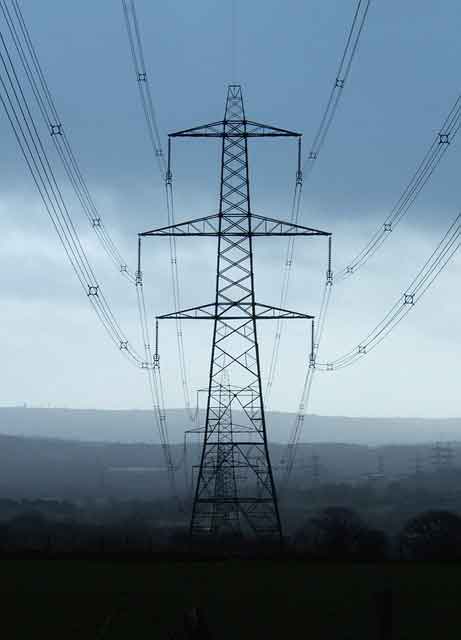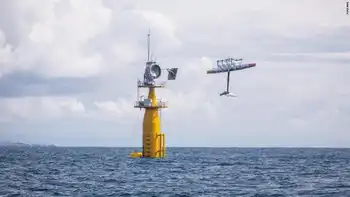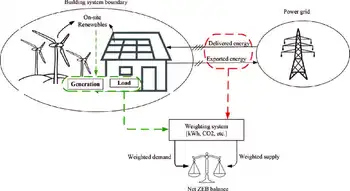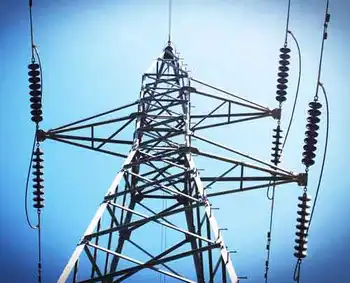China, India urged to curb energy use
By Newsday.com
NFPA 70e Training - Arc Flash
Our customized live online or in‑person group training can be delivered to your staff at your location.

- Live Online
- 6 hours Instructor-led
- Group Training Available
In India, melting Himalayan glaciers cause floods, while raising a more daunting long-term prospect: the drying up of life-sustaining rivers.
The two economic giants are becoming increasingly aware of the effects of rising temperatures. But though they are among the biggest contributors to the problem, both say they will not sign any climate change treaty that would slow the pace of their development.
Meanwhile, the United States, which has pumped more carbon into the atmosphere over time than any other country, says it will continue to oppose mandatory reductions in greenhouse gas emissions, especially if China and India refuse to budge.
The positions of those three countries are pivotal as delegates from 190 nations begin gathering this week on Indonesia's resort island of Bali to discuss a successor treaty to the Kyoto Protocol, the climate change agreement that expires in 2012.
The goal of the Dec. 3-14 meeting is to head off a scientific forecast of catastrophic droughts and floods, collapsing ice sheets and vanishing coastlines.
"We need everyone to play the game," said Fatih Birol, chief economist at the Paris-based International Energy Agency. If current trends continue, the U.S., China and India would account for more than half the world's carbon emissions by 2015, he added. "Without the big three on board we have no chance whatsoever to fix the climate change problem."
The threat appears worse than it did just a few years ago. A major culprit is coal, which because of its low cost is widely used to generate electricity and run factories in China and India, helping lift millions of people out of poverty.
China plans to add more than 200 coal-fired power plants in the next five years and India, more than 150, said Christopher Bergesen, who tracks power plant construction for Platts, a provider of information on energy markets and issues. He cautioned, however, that exact figures are hard to nail down.
With "the big three" seemingly dead set against mandatory emissions reductions, Birol and others say one of the focuses at Bali should be on developing incentives for China, India and other fast-growing countries to use energy more efficiently and invest in cleaner power, from wind to nuclear.
"Developing nations are looking for support," said Achim Steiner, executive director of the U.N. Environmental Program, adding that they want access to state-of-the art equipment to reduce carbon emissions.
What kind of technology is used when new coal plants are constructed is crucial, because they generally last up to six decades.
With climate change taking on a new urgency, the wealthy developed countries may be willing to lend a hand.
"I think we will see increased financial resources being made available bilaterally and multilaterally," Steiner said.
China and India say they are doing what they can to clean up. Beijing is closing down some of its worst polluting factories and power plants. It also has set an ambitious goal of cutting energy consumption per unit of economic output by 20 percent by 2010, a target some experts doubt China will reach.
"China will make its due contribution to emissions reduction and energy conservation, so please rest assured that our word is good," said Xie Zhenhua, who is leading Beijing's delegation to Bali.
Some delegates will try to convince China and India that certain policy changes would be cost effective, while also reducing greenhouse gas emissions.
As incomes rise, a new middle class is buying air conditioners and refrigerators, which are generally much less energy efficient than in the West.
If China imposed western-level efficiency standards for those appliances alone, "China would save electricity on a yearly basis from 2015 which is equivalent to building the Three Gorges dam," said Birol, referring to China's huge hydropower project.
Scientists predict that India's 4,500-mile coastline will be hard-hit by storm surges and rising sea levels that could displace millions of people. A major worry is that shrinking Himalayan glaciers will threaten the great rivers that provide water for vast agriculture regions that feed a sixth of the world's population.
The government, however, has a difficult balancing act in a country with 400 million people without access to electricity.
"We need to find pragmatic and practical solutions that would include mitigation and adaptation strategies with fair burden sharing," said Prime Minister Manmohan Singh, who will lead his country's delegation to Bali. "We're looking for a solution that does not perpetuate poverty in developing countries."











